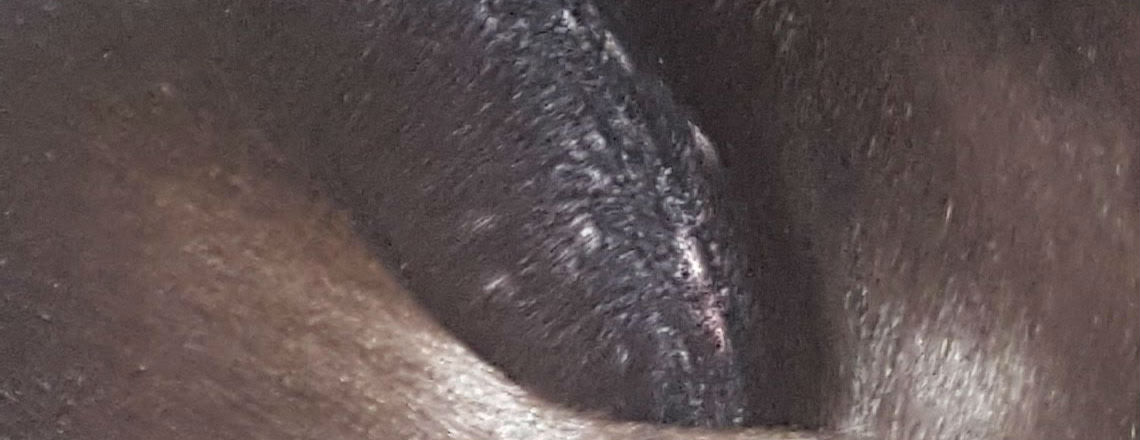My dog has small bumps on his skin that are sore. What is the cause and treatment?
Original Question: My dog started exhibiting small bumps on his back about 2 days ago. When I pick him up in that area of skin, he would whine. Soft petting in the area is OK. He is eating and drinking fine. What is the problem and should I be concerned? - David
 Nov 5, 2018
Nov 5, 2018
Hi David,
Thanks for your question.
It’s very important that despite the picture you sent, you have to understand that it would irresponsible of me to try and make a diagnosis from it. I can certainly share some ideas on how to proceed to make a diagnosis, but nothing replaces a physical exam and consultation in person with your primary veterinarian. So I recommend you do consider that as your next step.
There are some common procedures that may be recommended by your veterinarian that we consider for any skin lesion. The first thing that needs to be performed is a test called a skin scraping, which an inexpensive, quick test to determine if there are any bacteria or yeast on the skin. By collecting the sample from the skin and putting it on a glass slide your veterinarian can look under a microscope and see if one of these entities is present and if so a treatment can be started. You obviously have the option of dropping by your local pharmacy and picking up either an antifungal cream, antifungal shampoo, antibacterial scrub, or antibacterial shampoo and start treating it daily with the assumption that it could be a bacterial or yeast infection. I will caution you about this plan because if the lesions are not due to these causes you could be inappropriately treating and giving the ailment time to advance in the meantime. If the treatment trial doesn’t improve the condition within a few days I would certainly recommend working with your veterinarian on a diagnostic endeavour to confirm the condition and initiate the appropriate treatment plan.
If no yeast is found and only bacteria is present, you could consider performing a ‘culture and sensitivity test’ which will identify the type of bacteria and indicate the specific antibiotic that will resolve it. There are infections that can have multiple bacteria or resistant bacteria and knowing this will allow your veterinarian to formulate an ideal plan. You can consider antibacterial shampoos, avoiding swimming, drying your dog thoroughly after wet walks, using supplements to improve skin health like omega-3 fatty acids and potentially other topical agents known to reduce bacterial presence. Keep in mind that bacterial infections can be present in addition to other underlying conditions causing the lesions.
Allergies are a much more difficult situation. The first thing to know is that a yeast infection or bacterial infection could be secondary to an allergic reaction that may be underlying this issue. If allergies are at the root of this problem you may have observed that it is occurring seasonally or that it quickly recurs after a treatment for a simple bacterial or yeast infection. There are many treatments for allergies if that is the final diagnosis. It’s important to know that allergies are treated with multiple modalities. Treatment can include the use of omega-3 fatty acids, shampoos, elimination diet trials, daily topical therapies, medication to control secondary infections and medication to reduce the allergic response. I would strongly recommend that you read our “Dealing With Your Pet’s Allergies” that goes over these treatments in detail.
I hope this advice is helpful and as always please consult your veterinarian as the next step before moving forward.
Dr. Clayton Greenway


Disclaimer: healthcareforpets.com and its team of veterinarians and clinicians do not endorse any products, services, or recommended advice. All advice presented by our veterinarians, clinicians, tools, resources, etc is not meant to replace a regular physical exam and consultation with your primary veterinarian or other clinicians. We always encourage you to seek medical advice from your regular veterinarian.

